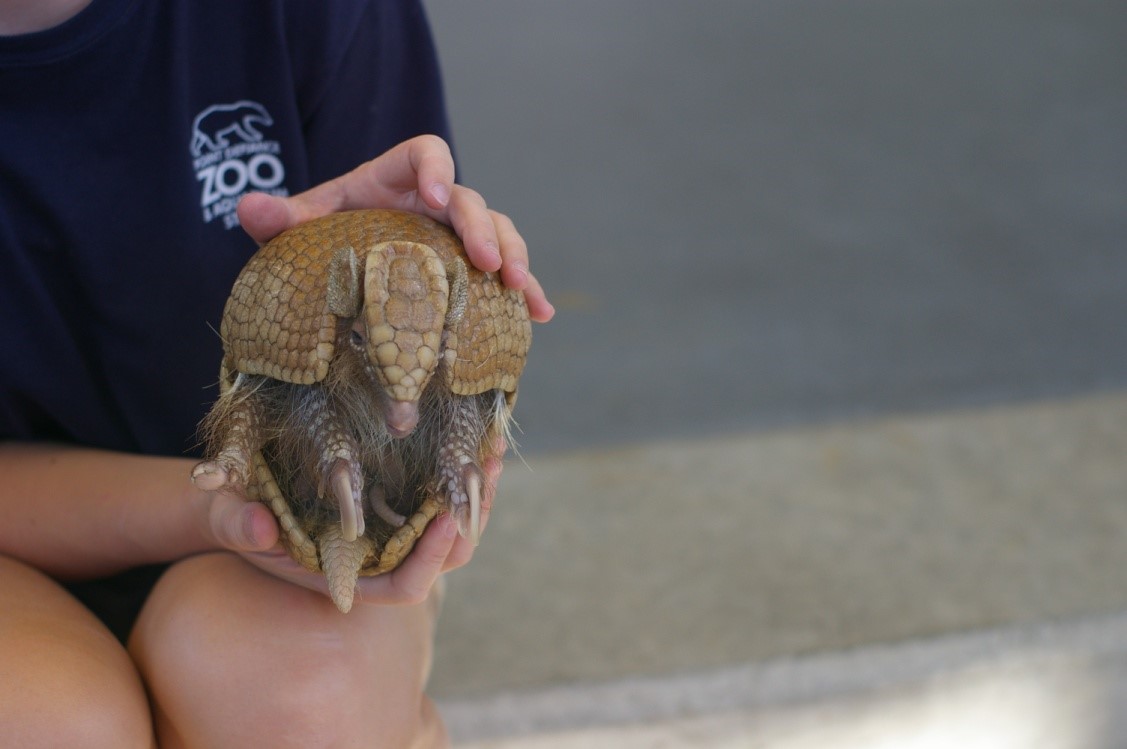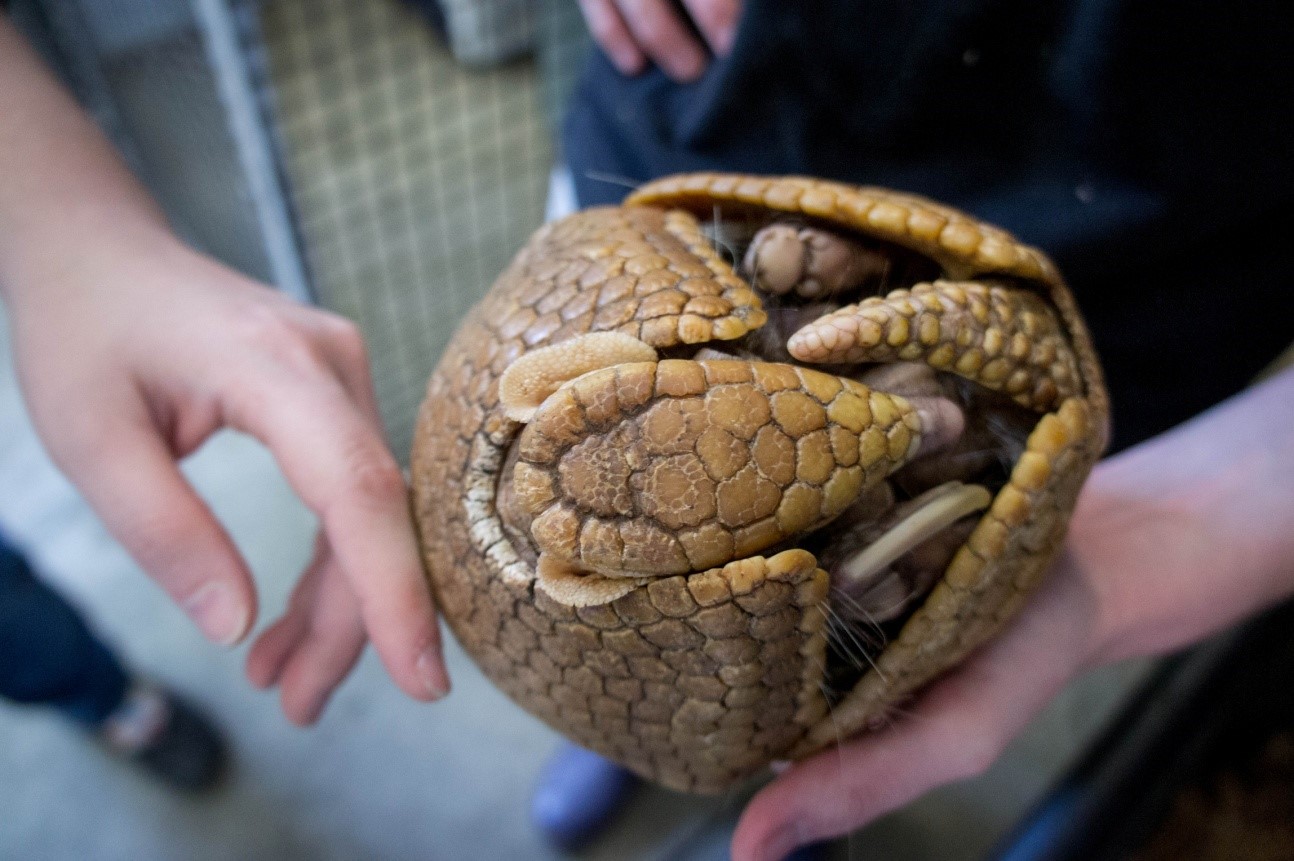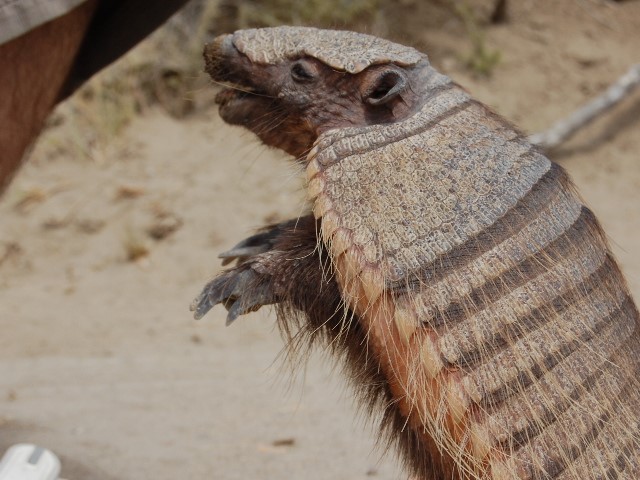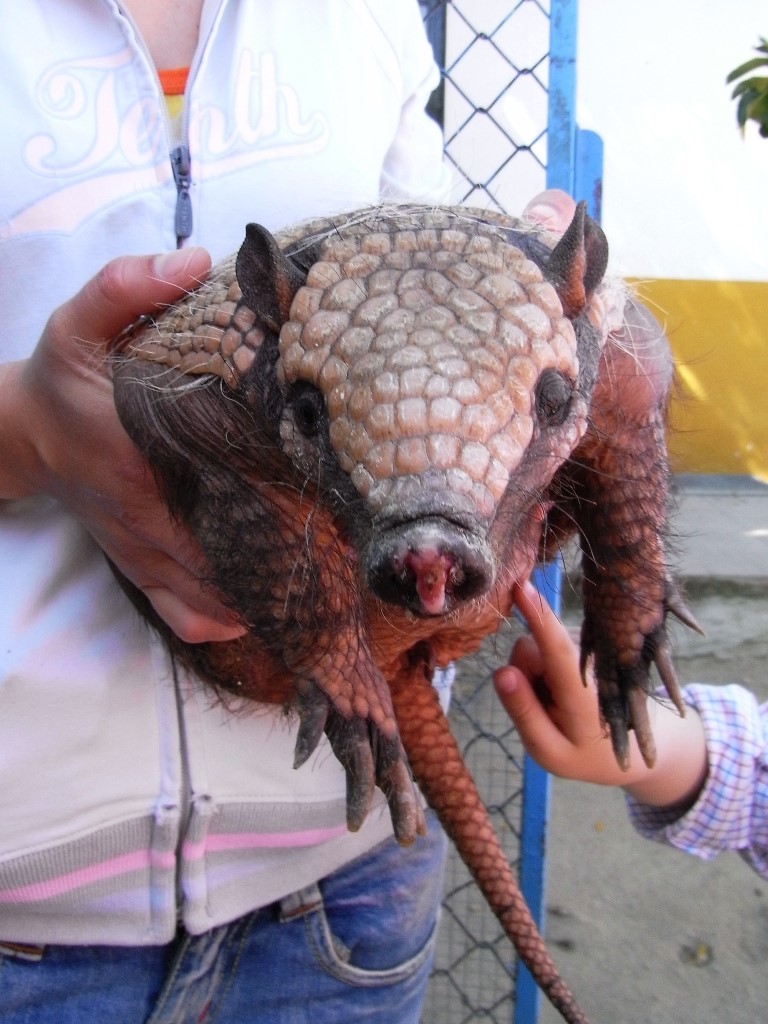Pet Armadillos: Care and Requirements

“Scooter the Armadillo” by Traci Lawson is licensed under CC BY 2.0
Armadillos are strikingly unique creatures, so it’s no surprise that some people are interested in keeping them as pets. These animals not only have a strange appearance, but they also maneuver differently and have unusual behavior. One of the most obvious is their ability to roll into a ball, which was comically featured in the animated film The Road to El Dorado. Is an armadillo the right pet for you? As you might have guessed, these animals are not popular pets in captivity, but they can be successfully owned by the right owner if they are legal in their state.
What are armadillos?
Armadillos are somewhat related to anteaters and sloths, being in the suborder Xenarthra. Their characteristic shell is composed of a leathery substance composed of dermal bone. They are mainly insectivorous and love to dig, which they use to locate prey and for creating burrows in which they reside. Only one species, the three-banded armadillo, is capable of rolling itself completely into a ball.

“Armadillo” by David Shane is licensed under CC BY 2.0
What Type of Experience Should You Have?
Armadillos are not pets for pet owners who are not used to or unwilling to adapt to the specialized needs of zoological non-domesticated animals. Keeping armadillos is not really ‘hard’ unless an owner is expecting the swift adaptability of popular small domestic pets. As house pets, armadillos will require more space than what traditional pet owners are used to and their behavior will need to be assessed for proper welfare. First time armadillo owners should seek advice from other owners and preferably be experienced with other ‘zoological’ pets, although a well-informed and practical owner should be able to have success.
Types of Armadillos in Captivity
There are four species of armadillo that are regularly available in the pet trade. In general, they are rare animals to come across, so a responsible breeder needs to be located.
- Screaming Hairy Armadillo. One of the smaller species occasionally seen.
- Brazilian Three-banded Armadillo. This species is probably the best ‘pet’ candidate for the typical exotic pet owner and they are the most common species kept by zoos, as they are the easiest to breed. They are also an exotic species which is good for states that prohibit keeping native wildlife.
- Nine-banded Armadillo. The most widespread species in the wild but not often owned as a pet.
- Four-banded Armadillo. This is the only native species of armadillo and subsequently, their North American native status will affect their legality in most, if not all states.

“Nine-banded armadillo” by Robert Nunnally is licensed under CC BY 2.0
Legality of Armadillos
Unfortunately, not many people get the choice to undertake caring for these animals due to misguided laws. There is the highly unlikely possibility that armadillos will transmit leprosy to humans, however it is very uncommon for them to have it to start with and it is more likely humans will give the disease to them. Armadillos are not legal in many states, so it is very important to check with your local and state-wide authorities to ensure they can be owned without a license.
Housing Armadillo
One of the most critical factors for raising alternative and demanding pets in captivity is the right enclosure. With armadillos, this is even more important because they require specialized environments in order to carry out species-specific behaviors paramount to their welfare. In the armadillo enclosure, a deep layer of substrate for digging should be prioritized. This can be sand, small animal bedding, hay, and any other non-toxic substrate. This can be present ideally throughout the enclosure or in a separate structure like a bin, using a ramp to make it accessible. Commercial cages will not provide everything an armadillo needs so some innovation will be needed. Some examples of housing include a modified room, dog pen, or even a stock tank. Adequate floor space is important and while there is no defined minimum space, they will need room to explore and most ‘traditional’ cage sizes for similarly-sized pets will be too small. It’s best to aim for the most amount of space that you can provide. 3’x8’ is an example of a reasonable amount of room.

“Molita! (armadillo)” by ollie harridge is licensed under CC BY 2.0
Feeding Armadillos
Armadillos should have a varied diet in captivity consisting of protein-sources appropriate for insectivores and smaller amounts of plant matter. The best place to explore feeding options is to find out what zoos feed their armadillos. Some use cat food, commercial insectivore diets from dealers such as Mazuri, and live feeders such as wax worms and mealworms. Other supplementary food items can include hard-boiled eggs, sweet potato, apples, and other fruits and vegetables. Of course, continued research for the best diet should be conducted. When you first acquire the animal, the seller will likely provide advice on what diet to start with.
Enrichment
Again, the proper cage will be essential for the welfare of your armadillo because enrichment opportunities will be enhanced. Important enrichment for armadillos includes cage furniture such as tubes and tunnels, toys such as balls, training sessions, and forging opportunities. With a favored food item, keeping armadillos busy should be relatively simple. Hide their favorite treats throughout the enclosure or within the substrate for them to find, or place them in treat-dispensing balls. These animals also enjoy different scents to explore. Armadillos, like all mammals, can even be trained with their favorite treats to perform simple behaviors that can be essential in their husbandry. The bigger the enclosure, the easier it will be to keep your pet busy.

“Armadillo” by Javier Lastras is licensed under CC BY 2.0
Handling
While it is enticing to encourage armadillos to roll into a ball for the interest of humans, this is a defensive posture which means stress for the animal. As armadillos do not like to be picked up, it is best to interact with them on ground level, encouraging them to explore around people.
Buying an Armadillo
Armadillos are not common animals to find in the pet trade, but there are a few breeders who typically offer them for sale a few times a year. You can request to be added to a waiting list or wait for one to show up in exotic animal classifieds. Like with other mammals, be sure you are buying from a USDA-licensed seller and ensure that the animal has been captive-bred. These are not inexpensive animals; they are typically priced around $3000, so this only further increases your need to do your research before considering a potentially challenging pet.







